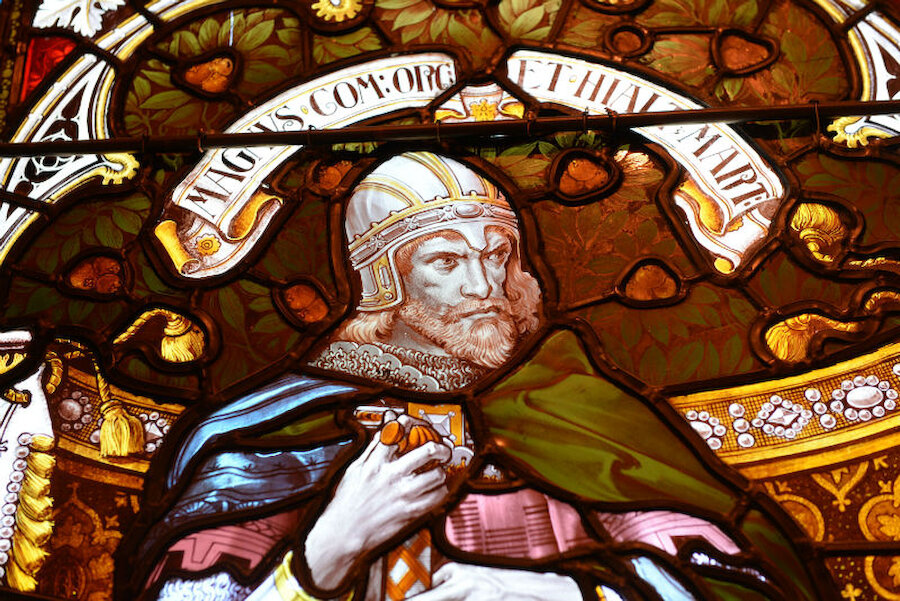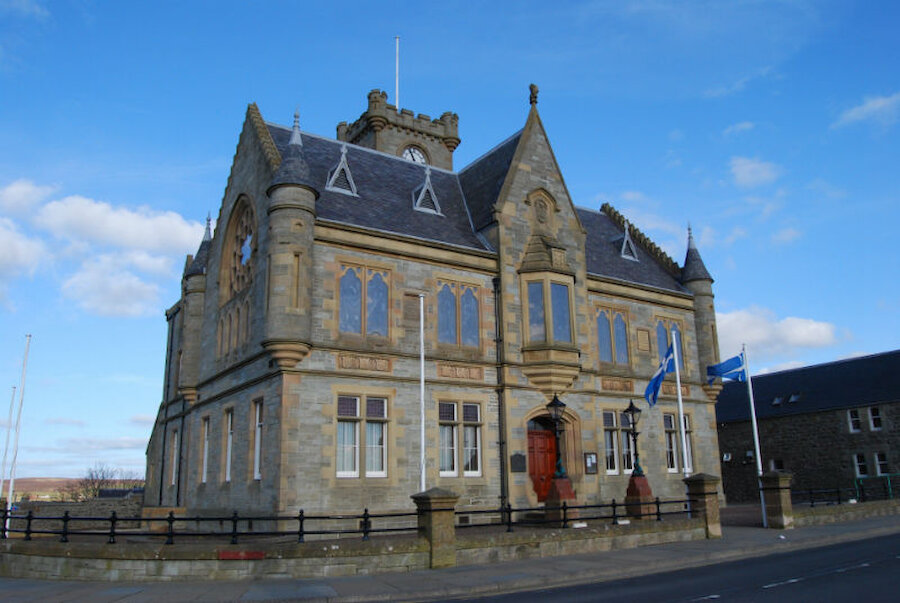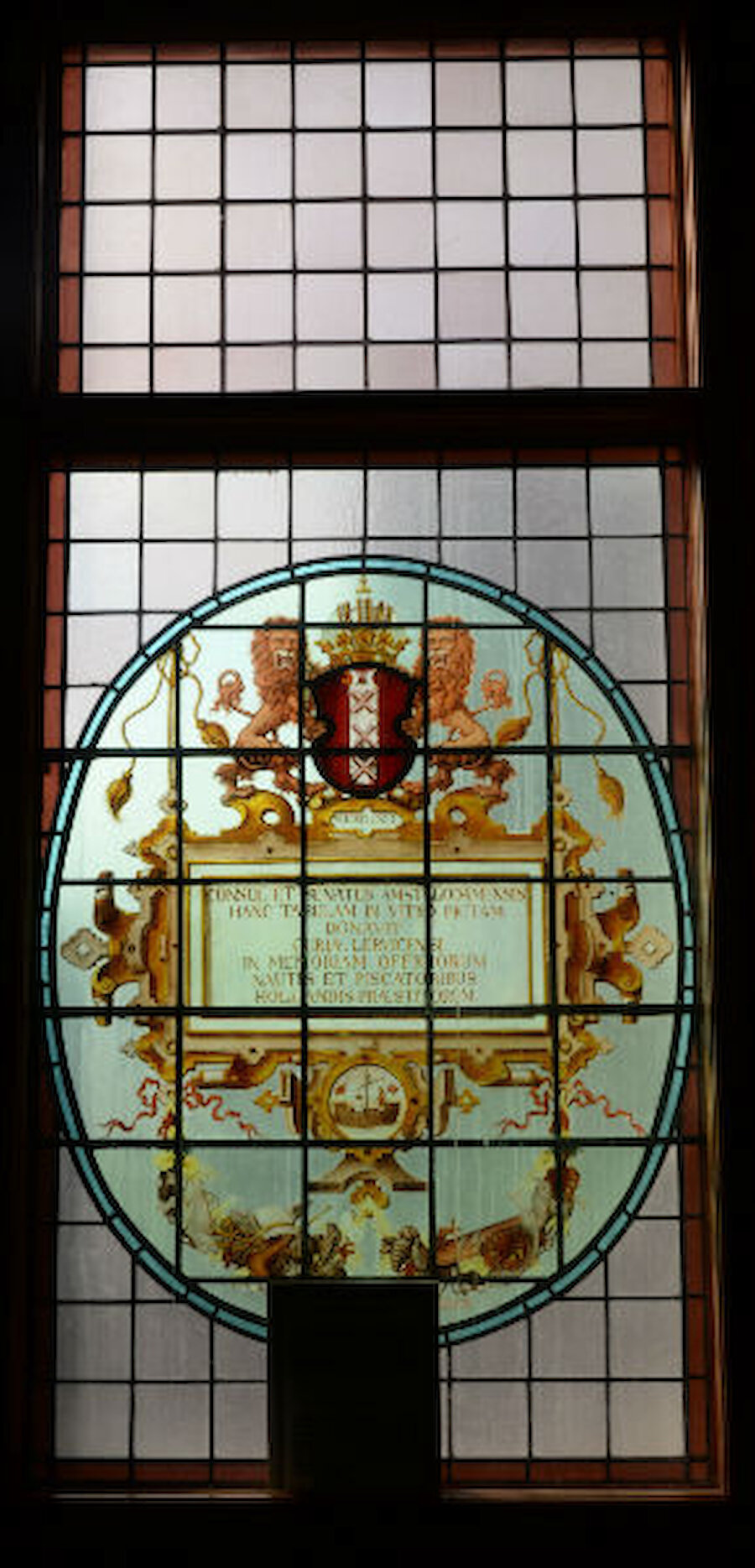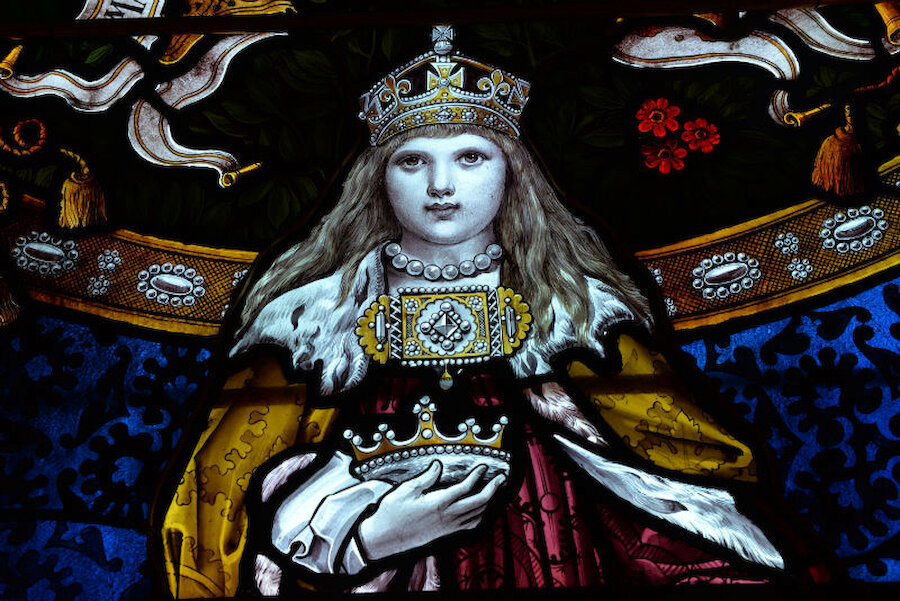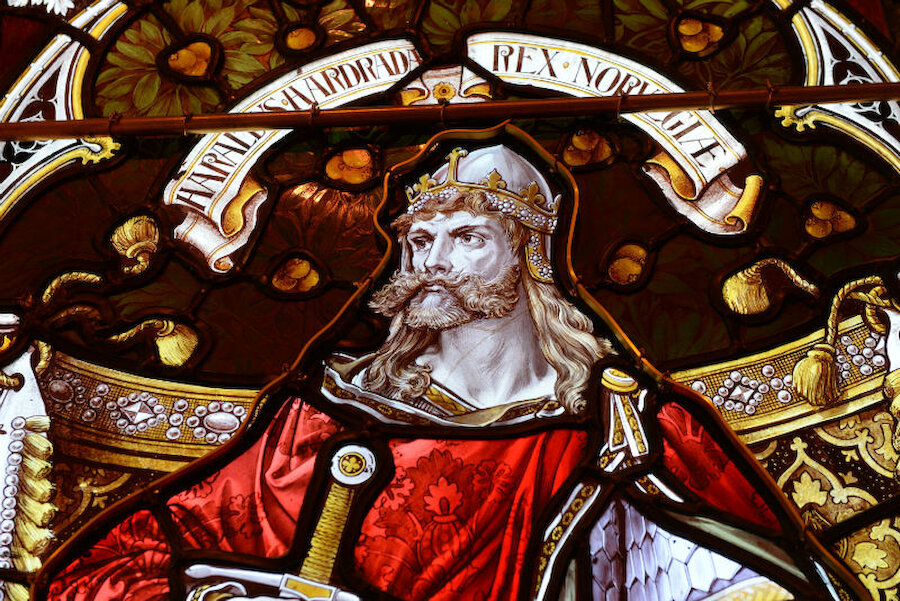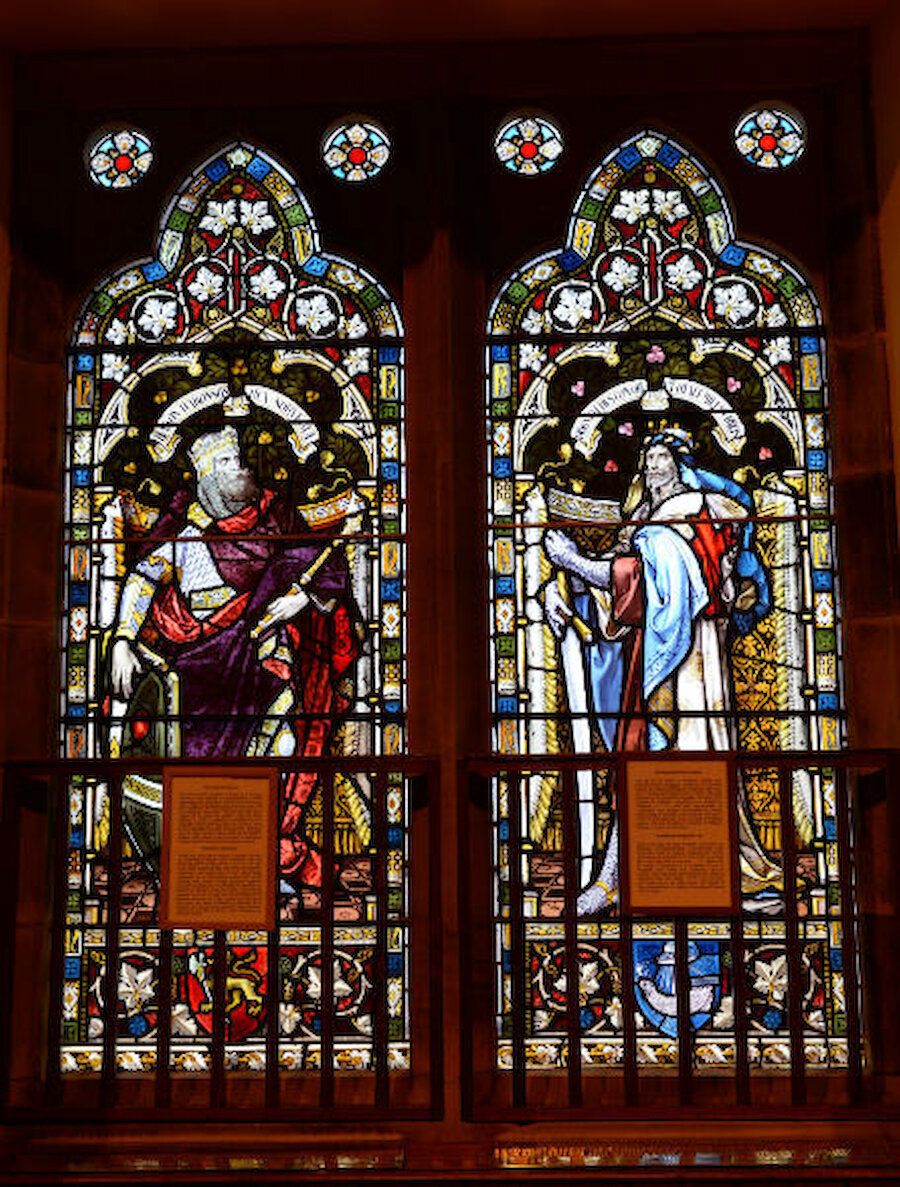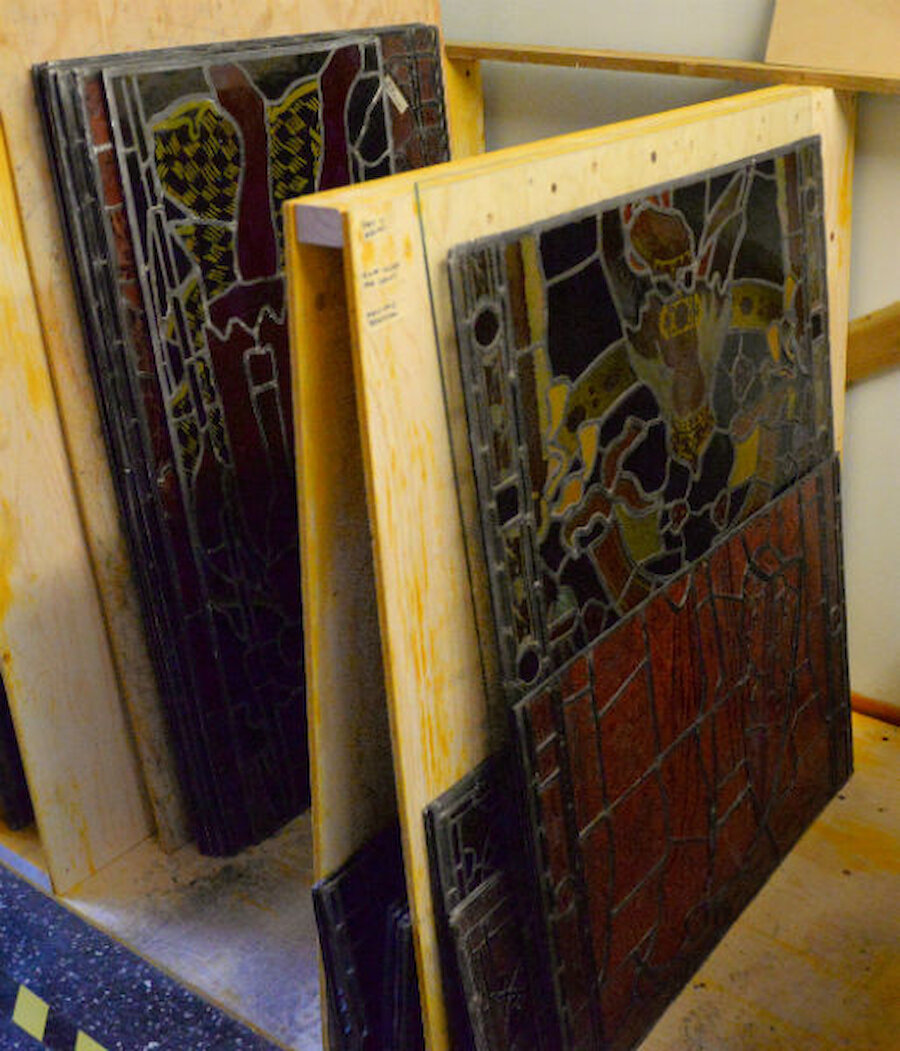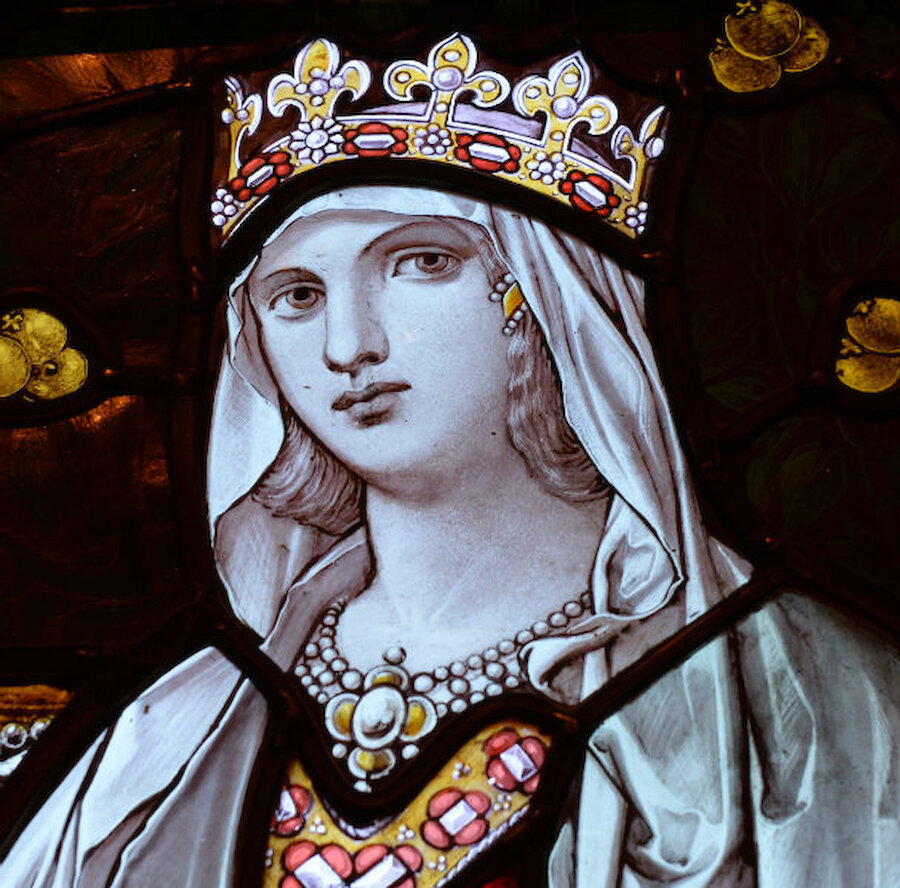The stained glass windows in Lerwick’s Town Hall, recognised as being of outstanding quality, are being repaired as part of a major renovation.
The Town Hall was opened in 1883 after a successful campaign to provide Lerwick with a civic building to meet the needs of a growing community. ‘Community’ was the operative word, because the raising of the funds was very much a community effort, led by a lawyer, Charles Rampini (1840-1907), who had arrived in Shetland after a spell as a judge in Jamaica. Shares were issued and all kinds of other means of attracting support, such as bazaars, were deployed.
The original Flemish gothic design was by an Inverness architect, Alexander Ross, whose firm practised widely across the Highlands and in the islands, but it was modified by John Aitken of Lerwick. The result was a well-proportioned building that marked the boundary between the congested old ‘lanes’, leading up the hillside from the harbour, and the carefully-planned late Victorian ‘new town’ to the west.

